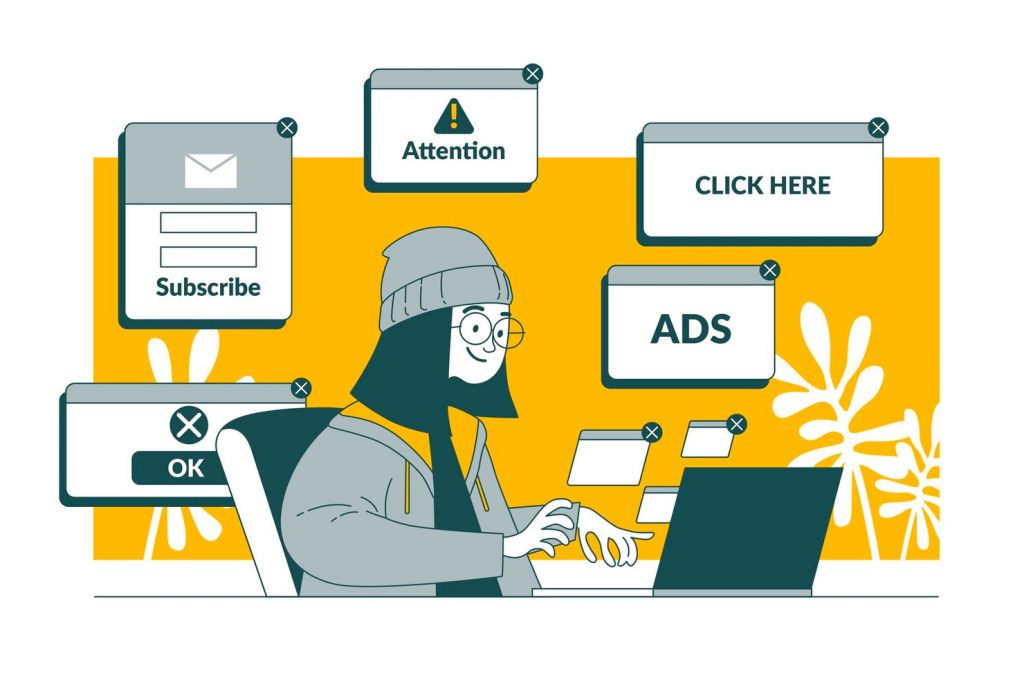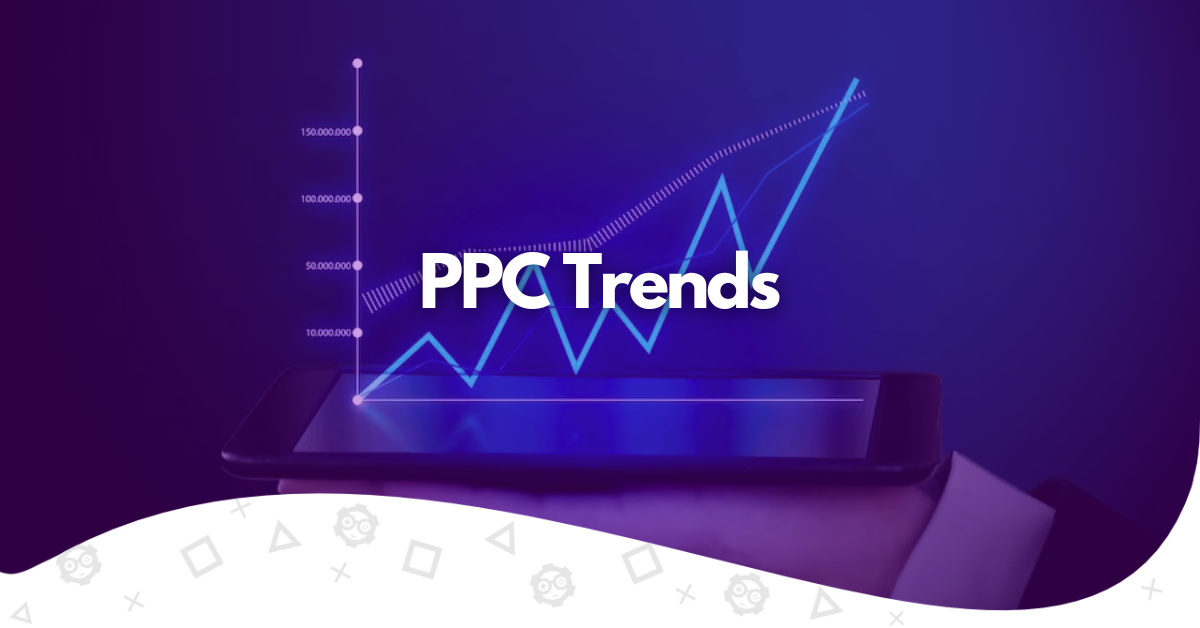In the dynamic realm of digital marketing, staying abreast of the latest PPC trends is pivotal for businesses striving to maximize their online presence and drive conversions. Pay-per-click (PPC) advertising has become synonymous with the competitive landscape as businesses leverage strategic campaigns across various platforms to capture the attention of their target audience. As we delve into the intricacies of PPC trends, from video ads to AI-driven strategies, we’ll uncover the strategies that can propel your business forward in an evolving online ecosystem.
What is PPC (Pay-Per-Click) Advertising?

PPC, or Pay-Per-Click, is a digital advertising model in which advertisers pay a fee each time their ad is clicked. It’s a method where businesses can buy website visits rather than organically earning those. This advertising model is prevalent across various online platforms, including search engines, social media, and display networks. Here’s a breakdown of how PPC works:
Ad Placement on Search Engines: In the context of search engines like Google, advertisers bid on specific keywords relevant to their products or services. When users enter these keywords into the search bar, the ads appear prominently in the search results, typically labeled as “Ad” or “Sponsored.”
Cost Determination: The cost of a click is determined through a bidding process. Advertisers set a maximum bid amount, indicating the highest amount they will pay for a click on the ad. Factors like ad relevance, quality, and historical performance influence the ad’s position and cost.
Social Media and Display Networks: Beyond search engines, PPC extends to social media platforms like Meta, Twitter, and LinkedIn, as well as display networks. Social media ads are targeted based on user demographics, interests, and behaviors. Display networks allow advertisers to showcase visual ads on various websites that are part of the network.
Payment Model: As the name suggests, advertisers only pay when users click on their ad. This pay-per-click model ensures that advertisers are charged specifically for the traffic they receive, making it a measurable and cost-effective way to drive visitors to a website.
Ad Rank and Quality Score: Ad position in search engine results in the highest bid does not solely determine pages. Search engines also consider the Quality Score, which evaluates the relevance and quality of the ad, the landing page, and the overall user experience. A higher quality score can lead to a better ad position at a lower cost per click.
Targeting and Customization: PPC platforms provide extensive targeting options, allowing advertisers to tailor their campaigns to specific audiences. This includes geographical, device, and demographic targeting, ensuring that ads are shown to the most relevant audience.
Performance Monitoring: Advertisers have access to detailed performance metrics, enabling them to monitor the effectiveness of their campaigns. Key metrics include click-through rate (CTR), conversion rate, cost per click (CPC), and return on investment (ROI), providing insights for ongoing optimization.
PPC advertising is a dynamic and results-driven approach to digital marketing, offering businesses the flexibility to control their budgets, target specific audiences, and measure the impact of their campaigns in real-time. As we explore PPC trends and strategies, understanding the fundamentals of this advertising model lays the groundwork for successful and strategic online marketing.
What are PPC Trends?
PPC trends encapsulate the ever-changing landscape of paid advertising, encompassing many strategies and tools to enhance online visibility and engagement. From Google Ads to Bing Ads, PPC campaigns are a powerful means to promote products and services across search engines, social media platforms, and more. As technology evolves, so do the methodologies behind PPC, embracing innovations such as smart bidding, PPC automation, and machine learning to optimize advertising spend and improve campaign performance.
Why are PPC Trends Important?

In the fast-paced digital marketing arena, understanding and leveraging PPC trends is more than just a strategic choice; it’s necessary for businesses aiming to thrive in the online landscape. Here’s a close look at why staying attuned to PPC trends is paramount.
Adaptation to Evolving Technologies
PPC trends serve as a compass for navigating through the ever-evolving technological landscape. As new technologies emerge and consumer behaviors shift, staying updated on PPC trends ensures businesses can harness the latest tools and strategies to remain competitive. According to Hootsuite, AI-driven tools are becoming increasingly popular in PPC campaigns, offering new opportunities for businesses to optimize their advertising strategies.
Optimizing Advertising Spend
Effective advertising budget management is a core component of successful PPC campaigns. By aligning with current trends, businesses can deploy their budgets more efficiently, maximizing the impact of each advertising dollar and achieving a higher return on investment (ROI). One of the key trends to watch out for in 2024 is using smart bidding to optimize ad spend.
Enhanced Audience Targeting
PPC trends often revolve around advancements in audience targeting capabilities. Understanding these trends empowers marketers to reach their target audience more precisely, delivering tailored messages that resonate with specific demographics, interests, and behaviors. This article from Social Media Today says that visual search is becoming an increasingly popular way for consumers to find products online, making it a key trend for businesses to consider when targeting their audience.
Integration of Automation
Automation is revolutionizing the PPC landscape, streamlining processes, and enabling marketers to focus on strategic aspects of their campaigns. Staying abreast of automation trends allows businesses to implement time-saving tools and strategies, leading to increased efficiency and campaign success. For example, according to Search Engine Land, one of the key trends to watch out for in 2024 is integrating automation tools like chatbots and AI-driven tools into PPC campaigns.
Improved Conversion Tracking
The ability to track and analyze conversions is fundamental to gauging campaign success. PPC trends often introduce new and improved methods for conversion tracking, providing marketers with valuable insights into user behavior and the effectiveness of their campaigns. According to Arm Worldwide, one of the key trends to watch out for in 2024 is automation for paid ad campaigns, which can help businesses optimize their conversion tracking and overall campaign effectiveness.
Adaptation to Search Engine Algorithms
Search engines continually refine their algorithms, influencing the effectiveness of PPC campaigns. Keeping an eye on PPC trends helps marketers align their strategies with the latest algorithmic changes, ensuring their ads remain relevant and visible in search results.
Competitive Edge in the Market
Staying ahead of the curve is essential in the highly competitive digital landscape. PPC trends offer a competitive edge by allowing businesses to adopt innovative strategies and technologies before they become widespread, positioning them as industry leaders.
Meeting Consumer Expectations
Consumer expectations are dynamic and shaped by design, content, and technology trends. PPC trends help businesses align their advertising strategies with these changing expectations, ensuring that the target audience sees and receives their campaigns positively.
In essence, keeping a finger on the pulse of PPC trends is a proactive approach to digital marketing, enabling businesses to survive and thrive in the ever-changing online ecosystem. As we delve deeper into the intricacies of PPC trends, we’ll uncover specific strategies and innovations currently shaping the landscape of paid advertising.
What Industries Spend the Most on PPC?

Industries allocate varying budgets to PPC (Pay-per-Click) advertising based on factors such as competition, target audience behavior, and the potential for return on investment. Here are some industries that traditionally tend to spend the most on PPC:
E-Commerce and Retail
E-commerce businesses often invest heavily in PPC to promote their products, especially during peak shopping seasons. The competitive nature of online retail and the need to capture consumers’ attention by actively searching for products makes PPC a vital channel; the average cost per click (CPC) for Google Ads in the retail industry is $0.66
Finance and Insurance
The finance and insurance sectors prioritize PPC to target individuals seeking financial products, services, or insurance coverage. Given the competitive nature of these industries, particularly in areas such as personal loans, mortgages, and insurance policies, PPC is a key avenue to consumer acquisition; the average CPC for Google Ads in the finance and insurance industry is $3.44.
Legal Services
Law firms and legal services invest significantly in PPC advertising to capture potential clients searching for legal representation. High-value keywords related to legal services can be competitive, prompting firms to allocate substantial budgets to ensure visibility in search results; the average CPC for Google Ads in the legal industry is $6.75.
Healthcare and Medical Services
Healthcare providers, clinics, and medical services often leverage PPC to reach individuals searching for health-related information or services. PPC allows them to target specific medical conditions, treatments, and services to connect with potential patients actively seeking assistance; the average CPC for Google Ads in the healthcare industry is $3.17.
Technology and Software
The technology industry, including software companies, invests heavily in PPC to promote their products and solutions. Given the dynamic nature of the technology sector, staying visible in search results is crucial for driving leads and conversions; the average CPC for Google Ads in the technology industry is $3.80
Travel and Hospitality
The travel and hospitality industry relies on PPC to attract travelers looking for flights, hotels, and vacation packages. With consumers frequently using search engines to plan their trips, PPC is a strategic avenue for reaching a broad audience; the average CPC for Google Ads in the travel and hospitality industry is $1.53.
Education and Online Courses
Educational institutions, universities, and online course providers use PPC to target individuals seeking academic programs and learning opportunities. The competitive landscape in the education sector makes PPC an essential tool for student recruitment.
Real Estate
Real estate agencies and property developers utilize PPC to connect with individuals searching for homes, apartments, or commercial spaces. PPC enables them to target specific locations and property types to reach potential buyers or renters.
Home Services (e.g., HVAC, Plumbing, etc)
Local businesses offering home services, such as HVAC repair, plumbing, or electrical services, often invest in PPC to attract customers to their service areas. Targeting specific geographical locations is crucial for these businesses.
Automotive
Automotive dealerships and manufacturers allocate significant budgets to PPC to promote new and used vehicles. PPC allows them to showcase inventory, highlight promotions, and capture the attention of consumers actively researching automotive options.
It’s essential to note that industry spending on PPC can shift based on market dynamics, economic conditions, and emerging trends. Additionally, the popularity and effectiveness of PPC may vary by region and industry sub-sector. For the most current and industry-specific insights, it’s advisable to refer to the latest market research and industry reports.
PPC Trends Over the Years: Evolution and Transformation

The landscape of PPC advertising has undergone a remarkable evolution over the years, shaped by technological advancements, changes in consumer behavior, and the constant quest for more effective marketing strategies. Let’s delve into the key PPC trends that have characterized previous years, understanding their impact and how they have shaped the current state of paid advertising.
Keyword Targeting and Ad Inventory
In the early days of PPC, keyword targeting was the primary driver of ad relevance. Advertisers focused on aligning their campaigns with specific keywords to ensure their ads appeared in relevant search results. Ad inventory was limited, and advertisers had to bid on keywords to secure ad placements.
Search Campaigns and Bing Ads Rebranded
Search campaigns dominated PPC strategies, especially on platforms like Google. Bing Ads, an early player in the PPC space, underwent a rebranding to Microsoft Advertising, expanding its reach and introducing new features. This shift signaled a growing diversity in search engine advertising beyond the ubiquitous Google Ads.
The Rise of Video Advertising
Video advertising emerged as a powerful trend, transforming the PPC landscape. Platforms like YouTube became key players, allowing advertisers to engage audiences through compelling visual content. The shift towards video marked a significant departure from text-based ads, presenting new opportunities for brand storytelling.
Targeted Ads and Social Media Platforms
As social media gained prominence, PPC marketers began leveraging targeted ads on platforms like Facebook, Twitter, and Instagram. This trend allowed advertisers to tap into the rich user data of social media platforms, enabling more precise audience targeting based on demographics, interests, and behaviors.
Automation and AI-Powered Strategies
Integrating automation and artificial intelligence (AI) marked a transformative phase in PPC. Automated bid strategies, smart bidding, and machine learning algorithms became instrumental in optimizing ad performance. This shift enhanced efficiency and opened doors to more sophisticated targeting and personalized ad experiences.
Multi-Platform Trend and Cross-Channel Strategies
PPC expanded beyond traditional search and social platforms, embracing a multi-platform trend. Advertisers sought to reach audiences across various channels, from search engines to social media. This shift prompted the need for cohesive cross-channel strategies to ensure consistent messaging and brand presence.
Effective Conversion Tracking and Enhanced Cost Per Click (eCPC)
The focus on performance metrics intensified, leading to advancements in conversion tracking. Enhanced Cost Per Click (eCPC) strategies emerged, allowing advertisers to optimize bids based on the likelihood of conversion. This evolution aimed at maximizing ad spending for improved ROI.
As we reflect on these trends, it becomes evident that the PPC landscape is constantly in flux. The amalgamation of evolving technologies, consumer preferences, and advertising platforms continues to shape the strategies employed by PPC marketers. In the subsequent sections, we’ll delve deeper into recent trends and explore how they influence the current state of PPC advertising.
PPC Trends and Strategies for 2024: Navigating the AI-Powered Era

As we enter 2024, PPC (Pay-Per-Click) advertising is on the brink of transformative shifts driven by technological advancements and evolving user behaviors. This comprehensive guide unravels the trends and strategies that will redefine how businesses engage audiences, optimize campaigns, and leverage the potential of artificial intelligence (AI).
AI Dominance in PPC
The paramount trend in 2024 is the dominance of AI, profoundly impacting PPC campaigns. AI’s capabilities open new frontiers in campaign optimization, from predicting future ad click-through rates (CTRs) to identifying optimal bidding strategies and assessing customer conversion likelihood. According to a recent post by Hootsuite, AI-driven tools are becoming increasingly popular in PPC campaigns, offering new opportunities for businesses to optimize their advertising strategies.
Budget Control Amidst CPC Inflation
Navigating rising costs per click and controlling budgets amidst CPC inflation becomes a critical consideration for advertisers. Strategic budget management is emphasized to ensure profitability amid increasing click costs. For example, according to WebFX, one of the key trends to watch out for in 2024 is automation for paid ad campaigns, which can help businesses optimize their budget management and improve their overall campaign effectiveness.
New User Engagement Channels
The PPC landscape welcomes new user engagement channels, urging advertisers to explore innovative ways beyond traditional platforms. Diversification becomes key for effective ad campaigns, including exploring voice search and visually engaging content. According to Google, video ads are becoming increasingly popular in PPC campaigns, offering new opportunities for businesses to engage with their target audience.
Rising CPCs and Platform Updates
The persistent trend of rising CPCs shapes PPC strategies, demanding adaptation to platform updates and addressing challenges posed by increased click costs. For example, Ad Samurai says that one of the key trends to watch out for in 2024 is the use of smart bidding to optimize ad spend, allowing businesses to deploy their budgets more efficiently and achieve a higher return on investment (ROI)
Data-Driven Strategies for Success
A linchpin for PPC success in 2024 is data-driven strategies. Smart data utilization, powered by AI, becomes crucial for enhancing Google Ads performance, personalization, and navigating the complexities of CPC inflation. For example, according to TheeDigital, one of the key trends to watch out for in 2024 is automation for paid ad campaigns, which can help businesses optimize their conversion tracking and improve their overall campaign effectiveness.
Balancing AI and Human Creativity
Achieving a balance between AI and human creativity is imperative. While AI streamlines processes and enhances efficiency, human creativity remains indispensable for crafting compelling ad copy and maintaining a brand’s unique voice. According to Capgemini, one of the key trends to watch out for in 2024 is using AI-driven tools like chatbots and voice assistants to enhance user experience while maintaining a human touch in ad copy.
Amazon’s Growing Significance
Amazon’s advertising platform’s projected growth positions it as a significant player in the PPC landscape. Advertisers are expected to capitalize on Amazon’s expansive reach and consumer base. According to Forbes, one of the key trends to watch out for in 2024 is the use of Amazon for advertising, offering businesses new opportunities to reach their target audience and drive sales.
Leveraging Social Media for PPC
Social media platforms continue to be pivotal for PPC campaigns. Advertisers maximize audience targeting on several platforms, ensuring brand visibility and connection with specific demographics.
Audience Targeting Precision
Understanding and effectively targeting audiences will take center stage in 2024. Advertisers refine audience targeting capabilities to resonate with the right demographics, interests, and behaviors.
Innovative Ad Formats and Short-Form Content
Embrace innovative ad formats that align with changing user preferences. Short-form content, such as bumper video ads, and visually engaging formats, like visual search ads can capture attention in a world of information overload. Craft ads that convey your message swiftly and effectively.
Collaborative Filtering for Personalization
Implement collaborative filtering strategies driven by machine learning algorithms. Predict user preferences based on the collective behavior of users, enhancing personalization in your ad campaigns. This level of customization can significantly improve user engagement and ad relevance.
SEO and PPC Integration
Break down silos between SEO and PPC efforts. Align keywords, optimize landing pages, and synchronize messaging for a holistic online presence. Integration ensures your brand maintains visibility across organic and paid search results.
YouTube Masthead Ads and Enhanced Measurement
Premium YouTube masthead Ads at the top of YouTube’s homepage become a sought-after ad placement. Enhanced measurement techniques involving sophisticated metrics are embraced to understand and improve conversion rates.
Optimizing for Social Media Platforms
Social media continues to be a powerhouse for PPC campaigns. Tailor your strategy for each platform, leveraging the unique strengths of platforms like Facebook, Instagram, Twitter, and others. Maximize audience targeting capabilities on these platforms to reach specific demographics and enhance brand visibility.
Precision Audience Targeting
Refine your audience targeting capabilities based on data insights. Understand the preferences of your target demographic, especially younger people. Identify target audiences precisely, and tailor your ad copy to maximize conversions.
Smart Segmentation and Google AdMob
Optimize your PPC strategy by incorporating smart segmentation, especially on mobile devices. Leverage Google AdMob to show ads to users who are likely to click on them. Mobile optimization is pivotal in reaching users on the go.
Implementing Match Types for Precision
Fine-tune your keyword targeting with match types. Select the match types that align with your PPC strategy, whether broad, phrase, or exact match. Precision in keyword targeting ensures your ads appear in the most relevant searches.
Implementing CPA for Targeted Conversions
A shift from manual bidding to automated options like Target CPA optimizes conversion bids, particularly as the PPC landscape evolves. Automation allows for efficient and targeted spending.
As businesses embark on advertising across various platforms, this strategic weaving of links and images creates a cohesive and impactful narrative. In this ever-shifting landscape, the journey toward PPC excellence involves navigating complexities and shaping conversations, effectively positioning brands as leaders in the digital age.
Conclusion
In the intricate dance of PPC excellence unfolding in 2024, the linchpin is a strategic interplay of bidding strategy and the artful execution of PPC Marketing. The symphony of success resonates through the ability to predict future Ad CTRs and fine-tune advertising strategies for the demand for more targeted ads. In a realm defined by audience targeting capability, understanding the nuances of long-tail keywords and adapting to the melody of Voice Searches become keystones to crafting campaigns that transcend the mundane.
As the online advertising canvas evolves, ignoring Bing is not just a missed opportunity but a disregard for a potential powerhouse. Safeguarding against malicious intent and deciphering buyer intent act as vigilant guardians, ensuring the integrity of PPC Campaigns. The dance between hands-on management and automation options shapes the rhythm of success, whether investing in huge amounts or safeguarding campaigns with data protection. The narrative unfolds against the backdrop of the constant evolution of strategies, emphasizing the importance of staying future-proof and drawing insights from the potential of the sleeping giant that is PPC in 2024.

A PPC specialist who started with organic social media. For several years, the core of his activities are:- Google Ads, Microsoft Ads, Meta Ads, TikTok Ads, Twitter Ads, Linkedin Ads. He has led campaigns with a global reach, e.g. for FootballTeam, G2A, ETOTO, as well as many smaller campaigns in the sports, construction and financial industries. Has full focus on ROAS. Privately, a fan of football, history of wars and Star Wars.

